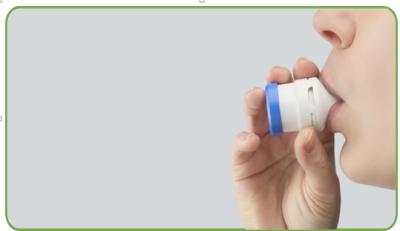MDI vs DPI: Understanding Inhaler Devices in Respiratory Care
-
Inhalation therapy is one of the most effective ways to deliver medication directly to the lungs, making it essential in the management of asthma, chronic obstructive pulmonary disease (COPD), and other respiratory conditions. Two of the most common devices used for this purpose are Metered Dose Inhalers (MDIs) and Dry Powder Inhalers (DPIs). While both aim to improve lung function and ease symptoms, they differ in design, mechanism, and patient usability.
Choosing the right inhaler—MDI (Metered Dose Inhaler) or DPI (Dry Powder Inhaler)—is vital for effective respiratory treatment. As leading pharma project management and design consultants, Adroitix ensures facility designs and processes that support advanced inhaler device manufacturing. With a focus on compliance, efficiency, and patient-centric outcomes, we help pharma companies deliver reliable respiratory solutions to meet global healthcare needs
What is an MDI?
A Metered Dose Inhaler (MDI) is a pressurized device that delivers a pre-measured amount of medication in aerosol form. The medication is released when the patient presses the canister, and a propellant helps carry the drug deep into the respiratory system.
Key Features:
- Uses propellants to disperse medication.
- Provides consistent, measured doses.
- Requires coordination between pressing the inhaler and inhaling at the same time.
Advantages:
- Portable and widely available.
- Delivers medication quickly and effectively.
- Suitable for a broad range of respiratory drugs.
Limitations:
- Proper technique is essential; poor coordination can reduce effectiveness.
- Some patients may find them difficult to use without spacers.
What is a DPI?
A Dry Powder Inhaler (DPI) delivers medication in powder form without the use of propellants. Instead, the device is breath-activated, meaning the patient’s inhalation effort disperses the medication into fine particles that can reach the lungs.
Key Features:
- No propellants required.
- Medication is released when the patient inhales.
- Dose delivery depends on inhalation strength.
Advantages:
- Easier to use for patients who struggle with coordination.
- Environmentally friendly—no propellants.
- Compact and convenient design.
Limitations:
- Less effective for patients with low lung capacity or severe airflow limitation.
- Sensitive to humidity, which may affect powder flow.
MDI vs DPI - A Quick Comparison
Feature
MDI
DPI
Mechanism
Pressurized canister with propellant
Breath-activated, no propellant
Coordination Required
Yes, press + inhale
No, inhale only
Best For
Patients with good inhalation technique
Patients who struggle with coordination
Portability
Highly portable
Highly portable
Environmental Impact
Contains propellants
Eco-friendly
Conclusion
Both MDIs and DPIs are highly effective in managing asthma and COPD, but their suitability depends on the patient’s condition and ability to use the device correctly. MDIs are reliable and widely available but require proper technique, while DPIs simplify the process by being breath-activated, though they may not suit patients with weak inhalation ability.
Choosing the right inhaler involves considering the patient’s needs, disease severity, and lifestyle factors and should always be guided by a healthcare professional.
